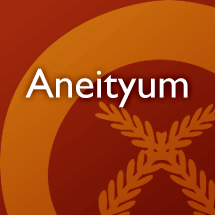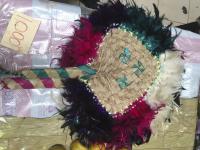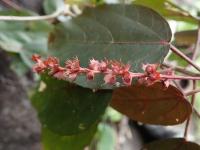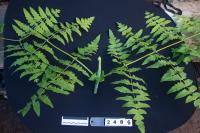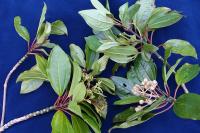An example search has returned 100 entries
afwafwa
n. beat coconut fiber
bookmarkaraho
n. made of branches
bookmarkarijai
v.n. to go ashore, to go from sea, to arise or overflow, as sea over land.
bookmarkelgai
v.n. expand as a leaf
bookmarketcei nohon
n. beat coconut fiber
bookmarkidi
adj. stringy, watery, as taro; also "ede"
bookmarkincai er hegaig
n. a tree for food; a fruit tree
bookmarkincei imtaig
n. the heart wood of a tree
bookmarkinciñpiñti
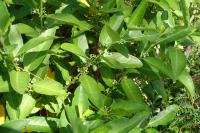
inhutlavlav
n. a bamboo flute
bookmarkinlepei owonp̃oded
inlopotjap

n. shrub to 1 m, fruits green. Secondary forest. (collection: Michael J. Balick #4897)
Example: The leaves are used for compost in the taro patch. Dig a hole, line it with the leaves of this species, cove with earth and plant taro. The leaves of this species are used to cover earth ovens.
bookmarkinma
n. a breadfruit tree
bookmarkinmehei

n. herb to 1. 5 m tall, sterile. Growing in weedy patch behind buildings on edge of trail. (collection: Michael J. Balick #4986)
Example: People use the leaves of this plant to wrap lap-lap for cooking on the earth oven or when boiling foods. The leaves can also be used as serving plates and to cover the stones on the earth oven.
bookmarkinm̃ap̃
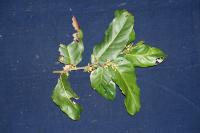
n. tree, 12-14 m tall (collection: Gregory M. Plunkett #3611)
Example: 1. The nut of this tree is edible and very good. Boil it with skin on or bake it in the earth oven and then cut it in half and eat. 2. Leaves for top of house ridge. 3. Leaves for fertilizing the water taro in swamps.
bookmarkintinan
n. a bed, a foundation, a plantation
bookmarkintoutau
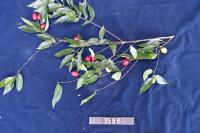
n. tree, 14 m tall (collection: Gregory M. Plunkett #3586)
Example: To make a fire, take a 1-2 cm diameter stick, sharpen it and rub it against a larger piece, ca. 6 cm in diameter. As a person rubs, the stick will start smoking and then start a fire, especially if there are a few small slivers of stem on the stick that can catch fire. People use other types of sticks to rub against the larger piece as well, and this will make a fire.
bookmarkitaho
adj. inland
bookmarkjigkom
[ʧiŋkum] n. chewing gum
bookmarkmaprum
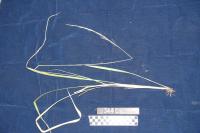
nadeni
n. the name of a prickly shrub
bookmarknafaiava
n. bay (of the sea); creek
bookmarknagdenayi
n. kind of taro
bookmarknagedauyag
n. kind of taro
bookmarknairek

napile
n. kind of taro
bookmarknapisinijvaig
n. kind of sugarcane
bookmarknarahcai
n. a table made of reeds, for drying arrowroot, etc.
bookmarknasieij
n. kind of tree
bookmarknaytmas
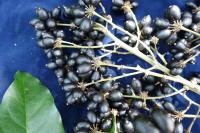
n. tree to 5 m, dbh 4 cm (collection: Michael J. Balick #4898)
Example: The leaves are used to cover goat or pig meat when a person is roasting it on an earth oven It prevents it from burning and enhances the taste of the meat.
bookmarkneaig milmat
n. a green coconut
bookmarkneipyepei
n. kind of tree
bookmarknekrou
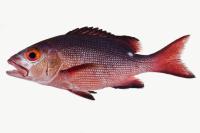
n. Two-spot red snapper, twinspot snapper, red bass
Example: Photo by Jeffrey T. Williams / Smithsonian Institution, License: CC BY-SA 3.0 via Fishes of Australia
bookmarknelm̃ai apeñ

n. tree 6 m tall, dbh 15 cm (collection: Michael J. Balick #4864)
Example: Fiber: Collect the stems of this plant, peel off the outer bark, soak (ret) in seawater for 1 week, then put stone on top of it-the fibers are loosened by the retting, peel them off and hang in the sun to dry and bleach. Weave small baskets, grass skirts and other things from this fiber. When sticks are placed in areas of the sea, shells are attracted to these sticks and people can collect the shells used for adornment--the animals in the shells like to eat the material on the sticks. Dried fruits of this plant are eaten by birds.
bookmarknepig upni
neroa
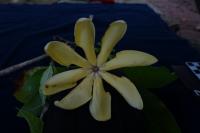
nesei
n. forest
bookmarknetto
n. sugarcane
bookmarknikam
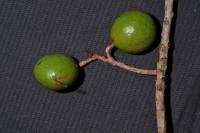
n. large tree, 18 m tall (collection: Gregory M. Plunkett #4076)
Example: 1. The name means "I come". This plant is used to convey messages. When a branch of this plant is left at the house of a person it indicates someone had visited them and they were not there. 2. Children eat the nut of the ripe (yellow) fruits.
bookmarknikam
![1a. This plant is a "message plant." If a person goes to another village with a leaf of this species in their hand, then people know that someone is coming, and this is reflected in the local name. 1b. Message plant – if you pop by someone’s house and drop leaves there, people know someone has visited them. You can ask neighbors who came by. 2. The fruit is a source of a nut that children love to eat raw. 3. It is known in Bislama as "false mango" [kiyaman mango].](/media/aneityum/pix/GMP_3481_MJB_97-scaled.jpg)
n. tree, 8-10 m tall (collection: Gregory M. Plunkett #3481)
Example: 1a. This plant is a "message plant." If a person goes to another village with a leaf of this species in their hand, then people know that someone is coming, and this is reflected in the local name. 1b. Message plant – if you pop by someone’s house and drop leaves there, people know someone has visited them. You can ask neighbors who came by. 2. The fruit is a source of a nut that children love to eat raw. 3. It is known in Bislama as "false mango" [kiyaman mango].
bookmarknillum
n. a species of seaweed
bookmarknimra an napau
n. the Magellanic Clouds
bookmarknimtac
n. kind of tree
bookmarknipʧinite
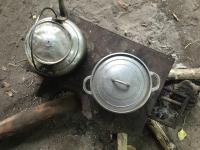
niri atga
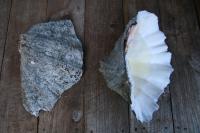
nohun
n. stem
bookmarknomodej wow
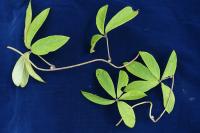
n. vine to 2 m, aerial tubers and lobed leaves. (collection: Michael J. Balick #4946)
Example: This is a root crop. It is harvested in April-June. The leaves turn yellow and indicate that the crop is ready to harvest. If planted in the old days the root would get much larger. It is a good cyclone disaster food. Grows wild now. Boil the tuber in fresh water, when it is cooked add a bit of sea water to give it a salty taste. Chew the starchy root and spit out the fiber. Another variety is like sweet potato and a person can eat the entire root without spitting out the fiber. Can mix with coconut milk as well to eat.
bookmarknopna
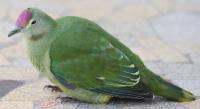
[nopɲa] n. Red-Bellied Fruit Dove
Example: Sub-adult Red-bellied Fruit Dove. Photo by Papier K / Wikimedia Commons, License: CC BY-SA 3.0 via Wikimedia Commons
bookmarknopwag
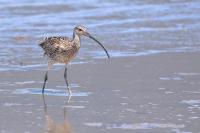
numnyac
n. a kind of bulbous root
bookmarknuputuligighap
n. stem of coconut leaf
bookmarknusjau
n. kind of sugarcane
bookmarksafenunui
n. kind of taro
bookmarksemi
adv. down hither
bookmarksepagko
adv. down yonder
bookmarktatau
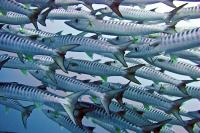
n. Blackfin barracuda
Example: Photo by Jan Messersmith, License: CC BY-SA 3.0 via Fishes of Australia
bookmarkuriicai
adj. made of branches
bookmarkuvid
n. three days ago; three days hence
bookmarkwai meteuc
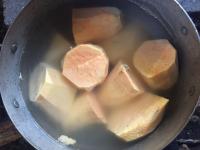
wudwud
n. kind of tree
bookmark